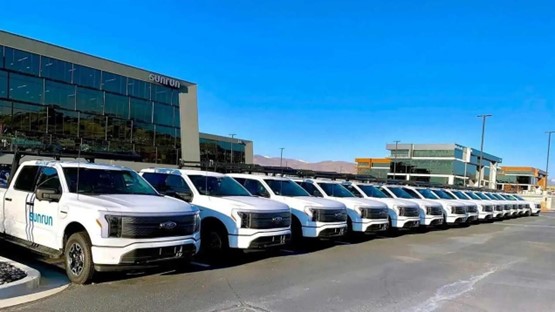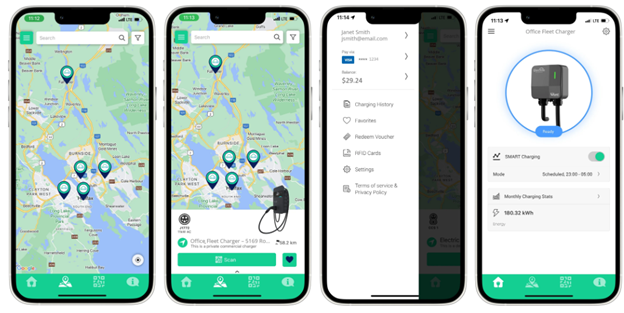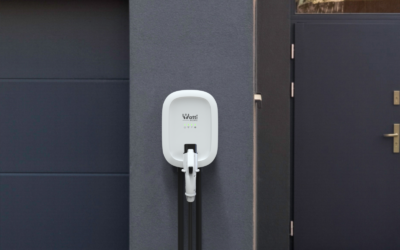
With the Ford F150 Lighting quickly becoming the dominant fleet service vehicle for yards, utilities, and service vehicles across North America, we wanted to share and answer two questions we’ve been getting asked more and more often since we began to represent Electric Avenue, a Canadian manufacturer of residential, commercial and DCFC electric vehicle chargers.
What chargers do I need to support my fleet?
How do I ensure my vehicles are always ready to go?
In this post, we’ll walk you through the factors you should consider when selecting the right charger for your electric fleet vehicles, using the popular Ford F150 Lighting as an example.
Determining Average Charge Times
Let’s start with some average charge times for common charger outputs. We created this chart based on a few of the most common vehicles on the market today. You can create a similar chart in Microsoft Excel for your fleet vehicle type by looking at the manufacturer information or doing a good Google search like we did.

Time to do some math…
Once you have your charging times chart built, you’ll next need to:
1. Determine the charging requirements of your electric fleet vehicles in kWh
In our example using the Ford Lighting, this is 130kWh
2. Next, determine the average range travelled per day of your fleet vehicles and the vehicle’s real-world maximum range.
Ford Lightning Extended Range Avg = 445km
Ford Lightning Extended Range Max = 515km
Average Range Traveled Per Day = 111km
3. Find the daily average battery consumption: divide your Max Range by the Average Range Travelled Per Day
515km/111km = 25% Battery
25% of 130kWh = 32.5
Using our Ford Lighting example, our kWh required per day is 32.5
Now, let’s go back and complete your charging times chart. To calculate your Level 2 options for your chart and identify the charge times, you’ll need to calculate the power of the charger in kilowatts (equal to the amps multiplied by the voltage, divided by 1000). Based on our example, we produce the following charge time values:
48A Charger at 208V = 9.9kW
32kWh Required / 9.9kW = 3hrs 15mins
80A Charger at 208V = 16.6kW
32kWh Required / 16.6kW = 1hr 54mins
For DC fast charging we would use the same math. However, one important thing to consider is charging rates typically slow their charging rates about 80% and you want to avoid charging the battery to 100% every day to preserve the battery’s lifespan).
120kW DCFC
300A CCS Cable at 400V (Ford Lightning DC Bus) = 120kW
32kWh Required / 120kW = 15mins
4. The last consideration is the number of vehicles in your fleet and the average time they are parked at the facility.
In our example, let’s assume you have 6 x Ford F150 Lighting trucks, and they were parked for 12 hours per day. We would make the following recommendations:
Average park time = 12 hours
12 Hours / Time on charger = Number of vehicles that can charge
48A Level 2 6 Chargers on two 60A Single Phase 208V Circuits with Power Sharing
80A Level 2 6 Chargers on one 100A Single Phase 208V Circuit with Power Sharing
120kW DCFC 1 Charger on one 180A Three Phase 480V Breaker
Fleet Charge Monitoring – The Final Piece
The last piece to this fun equation is control. Charging hardware is only half the story of any charging infrastructure these days. Being able to control access and monitor usage and energy consumption is just as important. Electric Avenue’s software platform takes it one step further by offering monitoring and energy reimbursement options for staff who have a company vehicle they drive home and charge at night — all in one commercial software platform.

Your Custom Charging Solution
Charging infrastructure is an important consideration in your fleet vehicle purchase, but don’t let it be a barrier for making the switch! If you are looking for support in figuring out your optimal EV charging system, get in touch with our Renewable Energy Specialist, Catherine. She’ll be able to walk you through your options based on your needs and provide a recommendation to help you create a more sustainable business and say goodbye to company gas cards forever!



